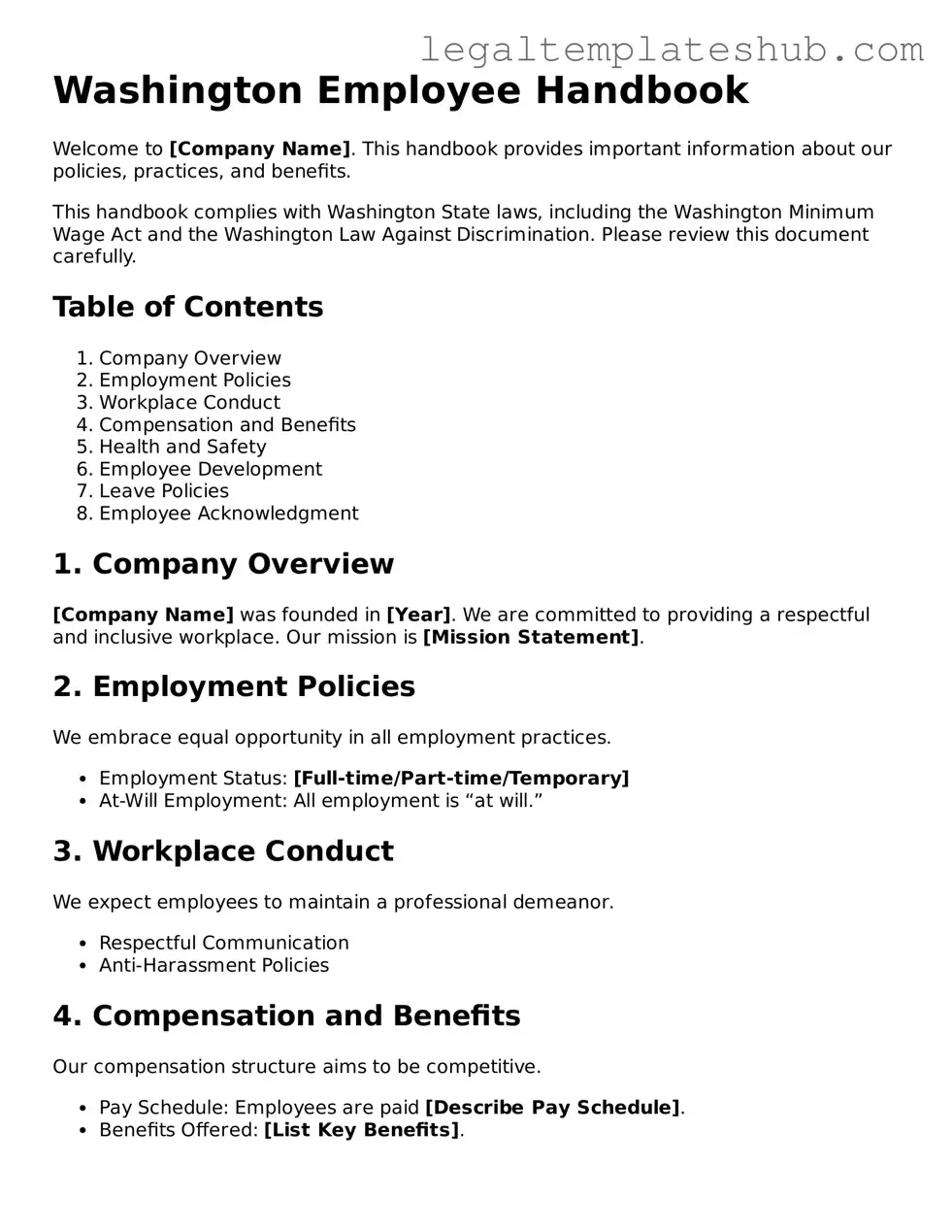Printable Employee Handbook Document for Washington
The Washington Employee Handbook form is a crucial document that outlines the policies, procedures, and expectations for employees within a company. It serves as a guide to help employees understand their rights and responsibilities while fostering a positive workplace culture. To ensure compliance and clarity, it's important to fill out this form accurately and completely.
Start the process today by clicking the button below to fill out the Washington Employee Handbook form.
Access Editor
